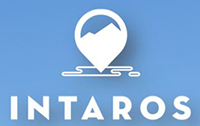The main aim of this deliverable, 6.13, is to offer advice on how the practice of applying existing observational data, ecosystem models, and indicators may be expanded from the Barents Sea and Disko Bay, West-Greenland to a wider range of Arctic sea regions and ecosystems. Further, we build advice and recommendations upon the established Norwegian Barents Sea ecosystem management plan, the more local management system for Disko Bay and focused individual and group interaction with a wide range of stakeholders in both areas. The expected impact is to provide advice on the most relevant and useful scientific basis for better-informed decisions and better-documented processes for managers and policymakers on local, regional and pan-Arctic scales.
We conclude that both observational data and models are needed to get a holistic overview of the ecosystem status and to make reliable projections. The ecosystem models applied have different structural complexity and spatial resolutions making them suited for different roles in supporting the existing and future integrated Arctic Observation System (iAOS). The NoBa Atlantis model, applied to the Barents Sea, is the most complex model including many trophic levels and a range of anthropogenic pressures. It is highly suitable to make management scenarios and indices of higher trophic levels but is more coarsely resolved in time and space than the other two models we use. NORWECOM.E2E is a well-established model system with high temporal-spatial resolution for the Barents Sea. It has the carbon cycle and key fish species included. NORWECOM.E2E is well suited for making Observing System Simulation Experiments. FlexSem-ERGOM is a relatively new model for lower tropic levels with the highest spatial resolution among the three models, but with focus on smaller coastal systems and environmental changes. In INTAROS it has been set up for the Disko Bay. It has the advantage of being very flexible and can easily be adapted to a wide range of local ecosystems in the Arctic.
